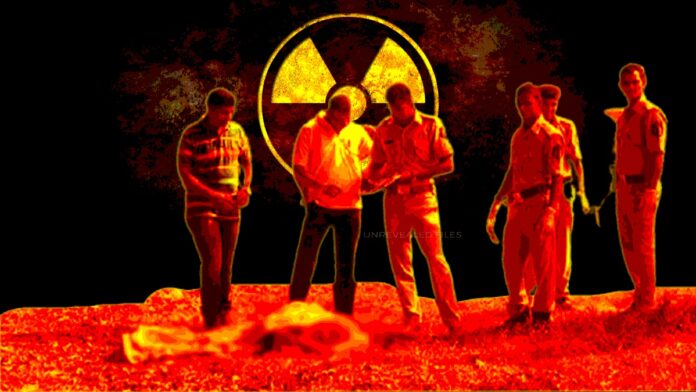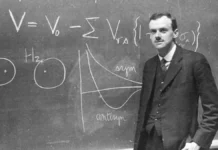
Scientists around the world have always been in the eye of evil forces, they have been targeted both politically and socially, but when it comes to the country’s security, they have been trapped in physical, conspiratorial, and covertly spread situations. India also could not escape from these powers; some speculate that the first target of these evil powers was the “Founder of India’s nuclear program,” Homi Bhabha; since his death under mysterious circumstances, the scientists of India have been continuously targeted.
The strange disappearance of India’s nuclear scientists and engineers under mysterious circumstances has raised many questions for the Indian government, police, and officials. Some conspiracy theorists claimed that there was a giant conspiracy behind all this. Some said that the American intelligence agency CIA is behind these incidents, and some pointed towards Pakistan’s ISI; according to them, these powers want to destroy India’s nuclear program so that India never becomes a nuclear power. Finally, the most critical question is, Why Indian media suppressed this news?
In this article, we have discussed how Indian nuclear scientists strangely disappeared one by one; all of them were linked by a common thread, “nuclear energy,“ in some way atomic weapons.
Contents
Mont Blanc’s peak in the Swiss Alps
In January 1966, Homi Jehangir Bhabha, the father of India’s nuclear program, was going to Vienna for a meeting on a Boeing 707 airliner named Kanchenjunga when his plane crashed over at Mont Blanc’s peak in the Swiss Alps, killing all the passengers on board including Bhabha. The officials said the cause of the disaster was a miscommunication between the pilot and the Geneva airport concerning the plane’s location. But, conspiracy theorists say it was a Central Intelligence Agency(CIA) assassination plan because other nuclear powers never wanted India to become a nuclear-powered Nation.
We have published a separate article on this issue; You must read that also. So please read it here: Homi Bhabha’s Death: An Unfortunate Accident or the Hands of the Crow.
Kaiga Atomic Power Station
L. Mahalingam, a 47-year-old senior nuclear scientific officer
On June 8, 2009, L. Mahalingam, a 47-year-old senior nuclear scientific officer of the Kaiga Atomic Power Station in Karwar, Karnataka, went for a morning walk and did not return. His severely decayed body was recovered from the Kali river five days later. When his body was discovered, it was assumed to be a suicide, and the Indian media ignored it. His family did not believe it was him until a DNA test verified his identity.
Suspicion was widespread that he was the object of a diabolical plan targeted at the country’s nuclear program.
Raman Gupta, Uttara Kannada Superintendent of Police, rubbished all the claims, saying, “He went for a walk that morning and knew very well that he was about to commit suicide. He also had heart problems. He never forgot his phone.” But, on the day of the suicide, he forgets his phone and watches at home”. Due to signs of family discord, officials concluded that L. Mahalingam committed suicide.
The Karwar Police Department is convinced that it was a suicide. While the investigation is still on, Mahalingam’s brother, who works for a corporation, says, “I used to call the Karwar police department repeatedly to ask if any new leads were found. From the point of view of the police, I do not agree”. He left Karwar and went to Tamil Nadu after Mahalingam’s death without informing the police.
An employee under mysterious circumstances
On April 7, 2009, Ravikumar Mule, a Kaiga nuclear power plant employee, died at an apartment in Mallapur’s Kaiga township under unrevealed circumstances.
The cops appear to have concluded that it was a suicide case. SP Raman Gupta said that the police investigation supports this judgment. He highlighted, though, that the probe is not yet complete. However, Ravikumar Mule’s wife, Ashwini, has requested a CBI investigation into the event.
The cops have been tight-lipped about the case’s development. The usual response is that the inquiry is ongoing.
Bhabha Atomic Research Centre’s (BARC)
Two young researchers, Umang Singh and Partha Pratim Bag
On December 30, 2009, two young researchers, Umang Singh and Partha Pratim Bag, died in a suspicious fire in the radiation and photochemistry section of the Bhabha Atomic Research Centre (BARC). This incident happened at the high-security BARC facility at Trombay, where the third-floor lab was located, one kilometer from the nuclear reactors, where Singh and Bag were not working with flammable materials.
Umang Singh and Partha Pratim Bag were two of the most promising scientists in a group of chemical experts. On a fateful afternoon, an unexplained fire burned down the lab; unfortunately, out of the 10-member crew, only Umang Singh and Partha Pratim Bag were working there. No fire extinguishers were on hand, and the fire truck got lost and arrived 45 minutes late at the lab. The fire had burned everything in the lab. The fact that nothing was explosive in the lab added to the intrigue. The reason for the fire that burned Umang and Partha was unknown to their families. Both families had to submit blood samples to the lab for a DNA test to identify the remains.
Umang’s family lives in a lower-middle-class family in Mumbai’s Jogeshwari area. According to Umang’s father, Udaynarayan Singh, Everybody from BARC visited them. They asked all of them, but nobody answered them about what caused the fire. So they hang their head and keep quiet.
Partha’s family lives in Narayanpur village, over 120km from Kolkata in South 24 Parganas district. According to Partha’s father, “We are simple people from a village. Mumbai is far, far away. What can we do from here?”, No one from BARC even visited the Bags after Partha died.
When Partha’s family landed in Mumbai the day following the event, they were taken aback by the questions the police asked them. Despite the family’s grief at their son’s loss, the police interrogation of them bordered on “harassment.” “It appeared as though they accused our dead kid of some foul act,” Deboprasad said. Partha’s family is adamant about not cooperating with the cops. They reportedly blamed their resignation in the case on a “language issue and distance.”
According to THE WEEK, they inquired with the investigators about the cause of the fire. Trombay Assistant Commissioner of Police Jalinder Khandagale said the police report had been submitted to the government. BARC’s internal inquiry report has also been submitted to the government. However, when Khandagale was asked about police findings, he tight-lipped and did not say anything.
A former scientist and former head of the Indian Women Scientists’ Association
On April 30, 2011, Dr. Uma Rao, a 63-year-old retired scientist and former president of the Indian Women Scientists’ Association, was discovered dead at her home near the Bhabha Atomic Research Center (BARC) campus. Even though her death was ruled a suicide, her family members disputed the conclusion, calling the investigation inadequate.
She’d had Irritable Bowel Syndrome (IBS) for 20 years, and the condition frequently brought her severe headaches. Her death is suspected of being caused by an overdose of sleeping medications. According to authorities, a suicide note was discovered in the residence, and Rao may have committed suicide due to her long-term sickness.
Mahadevan Padmanabhan Iyer, a 48-year-old mechanical engineer
On February 22, 2010, Mahadevan Padmanabhan Iyer, a 48-year-old mechanical engineer at the BARC reaction group, was discovered dead at his home in south Mumbai in what seemed to be a clear case of murder. Iyer’s residence was untouched save for minor blood marks on the bed where he was discovered dead. After neighbors complained of a foul odor, the death was found two days after the murder.
The death was first attributed to a heart attack. Then, slowly, it became “suicide.” Iyer died after being struck in the head with a blunt object, according to an autopsy done by forensic specialists at Mumbai’s Grant Medical College. The murderer has yet to be arrested.
Nuclear scientist Mohammed Mustafa
On May 12, 2012, Mohammad Mustafa, a scientist at the Indira Gandhi Centre for Atomic Research, Kalpakkam (IGCAR), next to Bhabha Atomic Research Centre, was found dead with his wrists slashed. The police official said, “We have recovered a note purportedly written by Mustafa stating that nobody is responsible for his death.” No further investigation happened.
India’s first nuclear-powered submarine INS Arihant
On October 7, 2013, two chief engineers, KK Josh and Abhish Shivam, assigned to India’s first nuclear-powered submarine, INS Arihant, were found dead on railway tracks under Pendurty railway station limits of East Coast Railways. Relatives said there were no apparent indications of injuries, which the police confirmed. It was believed that they were assassinated somewhere, maybe poisoned, before being placed on the railway tracks to make their deaths look accidental or suicide-related.
The incident has been concluded by the Ministry of Defense and the media as a usual accident, and further investigations have been ruled out. Only ordinary police were assigned to look into the case deemed inconclusive.
According to GRP circle inspector A. Parthasaradhi, there were no suspicious markings on their body.
However, relatives and neighbors expressed doubts about the incident, pointing out that there were no apparent injuries to the bodies, which proved that they did not die after being hit by a passing train. Instead, both were likely killed somewhere else, and their bodies were kept on the railway tracks.
PIL filed by RTI activist Chetan Kothari
Chetan Kothari, a right-to-information activist, filed a Public Interest Litigation (PIL) in the Bombay High Court, requesting that the government create a special investigation team to look into the strange deaths of nuclear scientists and engineers between 2010 and 2014. A significant proportion of these fatalities have been labeled “unexplained.”
The petition argues that fatalities not categorized as suicide are commonly referred to as “unexplained.”
Fingerprints are generally lacking in all such inexplicable murders of scientists and engineers, implying a high degree of skill and craftiness on the side of those who may have been engaged in the crimes. Moreover, forensic experts often employ other telltale signs to explain fatalities and identify perpetrators, which are frequently absent.
In his PIL, Kothari claims that hundreds of nuclear experts deployed to various nuclear institutions around the nation have died suspiciously in the previous 15 years, with many of these deaths labeled as suicides or “unexplained deaths” by investigative authorities.
According to Kothari, the BARC has documented 680 staff fatalities over the previous 15 years. At the same time, the Baroda Heavy Water Plant recorded 26 deaths, while the plants in Kota and Tuticorin reported 30 and 27 deaths, respectively. In addition, during this time, 92 people working at the Indira Gandhi Center for Atomic Research in Kalapakkam died, with 16 being suicides.
Other RTI inquiry
According to an RTI request by the petitioner. The suicide rate in India is around 1 in 10,000, whereas the mortality rate is approximately 7 in 1,000, resulting in a suicide-to-death ratio of roughly 70. So, naturally, one or two of the 92 fatalities may have been suicides. But were the investigations into these murders speedy or random, or were there hidden forces at work?
Furthermore, nuclear experts face a far more evident threat to their safety. At the BARC, 69 fatalities above were directly attributable to cancer. At the same time, the remainder was primarily ascribed to long-term illnesses, at least some of which were likely caused by long-term radiation exposure. In response to another RTI inquiry, the BARC said that cancer was responsible for 70% of the 3,887 health-related fatalities there and at other nuclear facilities over 20 years (1995-2014). Cancer claimed the lives of 2,600 people at India’s nuclear power plants.
Meanwhile, 255 employees committed suicide, an average of one per month, primarily due to chronic diseases and family problems. Surprisingly, the Indian Space Research Organization lost 684 people over 15 years.
According to the Indian government
According to the Indian government, at least nine unnatural deaths of scientists and engineers happened at the BARC and the Kaiga nuclear site. Two were ruled suicides, while the others were ruled “unexplained.” In addition, between 2009 and 2013, at least ten Department of Atomic Energy employees were killed in unexplained fires or murders.
Conclusion
First, the important thing is not who might be responsible for the killings but that the Indian government’s inaction is putting its high-value employees at even greater risk. These scientists are critical to the development of India’s nuclear projects, be it for energy or security, but don’t have any special protections, which is a matter of concern for the persons involved in such sensitive programs. In India, so many security arrangements are made for the political leaders, then why not for the scientists?
All mysterious deaths are a matter of concern because all these deaths are linked to a common thread: “nuclear energy.” Otherwise, they could have been quite diverse and widespread geographically and institutionally. Isn’t this the subject of a higher investigation?
According to conspiracy theorists, the CIA and Pakistan’s ISI (Inter-Services Intelligence) are both suspected of being involved in the unexplained murder. According to their views, it is in those two countries best interests to undermine India’s promising nuclear program, which is critical to India’s military and economic sovereignty. This would prevent India from cementing its position as a regional giant and keep it reliant on the United States for its nuclear requirements.
Meanwhile, the silence of the Indian authorities and the hasty investigation are being seen as evidence of the cover-up. According to conspiracy theorists, the Indian government’s purposeful reluctance to not expose the subject of the deceased to the public is seen as a pre-emptive move to preserve its secrets. The scientist deserves at least a commendable tribute for contributing to the country.
Fingers are pointing very high, Prime Minister Narendra Modi, whose political cornerstone is nationalism. He has consistently praised Indian scientists but has been unable to get any higher investigation for such an important subject.
Sources
- UF Editors. (2021, September 23). The Strange Disappearance of India’s Nuclear Scientists. Unrevealed Files.
- Correspondent, H. T. (2009, June 15). N-scientist Mahalingam’s family seeks a DNA test. Hindustan Times.
- T. (2009, December 9). Ex-Kaiga employee’s wife seeks CBI probe. The Times of India.
- ET Bureau. (2009, November 29). Sabotage in Kaiga: Tritium added to drinking water. The Economic Times.
- Indian Express. (n.d.). Mystery BARC fire kills two scientists – Indian Express, from the http://archive.indianexpress.com/news/mystery-barc-fire-kills-two-scientists/561322/.
- Former BARC scientist found dead at home – Indian Express. (n.d.-b). Indian Express, from http://archive.indianexpress.com/news/former-barc-scientist-found-dead-at-home/783600/
- BARC scientist found she murdered in Mumbai. (2010, February 23). The Hindu.
- Jayaram, P. (2014, October 15). Of mysterious deaths. @businessline.
- T. (2013, October 7). Nuclear submarine engineer found dead on railway tracks in Visakhapatnam. The Times of India.
- P. (2016, January 22). Government seeks time from Bombay HC to state the causes of death of scientists. The Economic Times.
- Prasanna D Zore/Rediff.com. (2015, January 6). So who is killing India’s nuclear scientists? Rediff.
- GOVERNMENT OF INDIA DEPARTMENT OF ATOMIC ENERGY. Deaths of Nuclear Scientists. PDF.
FACT CHECK: We strive for accuracy and fairness. But if you see something that doesn’t look right, please Contact us.
DISCLOSURE: This Article may contain affiliate links and Sponsored ads, to know more please read our Privacy Policy.
Stay Updated: Follow our WhatsApp Channel and Telegram Channel.










